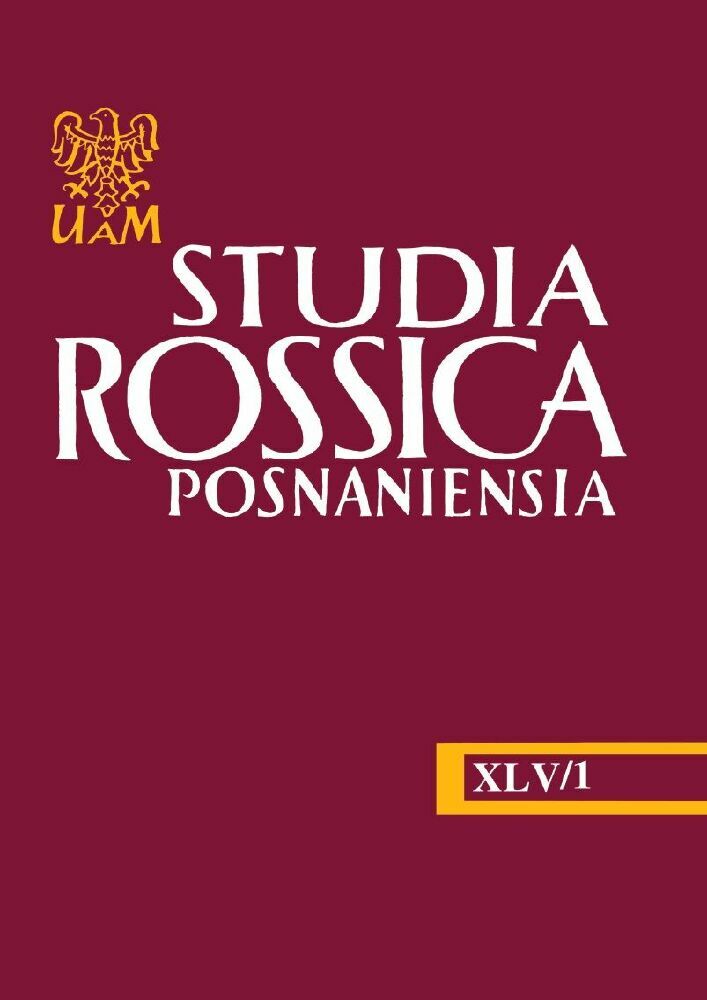Abstract
The most tragic and traumatic experiences in the respective histories of Ireland and Ukraine were their Great Famines. This paper discusses literary techniques used for the expression of national trauma in Irish and Ukrainian famine fictions. It examines the representations of An Gorta Mór and the Holodomor in The Silent People by Walter Macken, The Hungry Land by Michael Mullen, Maria: A Chronicle of a Life by Ulas Samchuk and Sweet Snow by Alexander J. Motyl, and demonstrates that the rhetoric of a national character occupies a prominent position in the novels. Exploring images of the Self and the Other within the oppressor/oppressed dichotomy, expressed from the perspective of the latter, the paper argues that national character stereotypes function to highlight the detrimental effects of British rule in Ireland and Soviet rule in Ukraine. Imagology and trauma studies underpin the paper’s theoretical framework. The paper is part of the doctoral thesis An Imagological Study of the Depiction of the Irish and Ukrainian Great Famines in the novels by Samchuk, Macken, Motyl and Mullen, supervised by Dr. Brigitte Le Juez and Dr. Áine McGillicuddy, defended in December 2018 at Dublin City University.
References
Alexander, Jeffrey C., Ron Eyerman, Bernard Giesen, Neil J. Smelser, Piotr Sztompka. Cultural Trauma and Collective Identity. Berkeley, CA, University of California Press, 2004.
Applebaum, Anne. Red Famine: Stalin’s War on Ukraine. London, Penguin Books, 2017.
Bell, Duncan, ed. Memory, Trauma and World Politics: Reflections on the Relationship between Past and Present. Basingstoke, United Kingdom, Palgrave Macmillan, 2010.
Beller, Manfred. “Perception, Image, Imagology”. Imagology. The Cultural Construction and Literary Representation of National Characters: A Critical Survey. Ed. Manfred Beller, Joep Leerssen. Amsterdam–New York, Rodopi, 2007.
Bexar, Gunilla. The Great Irish Famine in History-Writing and Prose Fiction: “The Mutual Interplay of Two Narrative Genres”. Åbo, Åbo Akademi University Press, 2016.
Collins, Michael. “Famine fiction and a surfeit of facts”. The Irish Times. Web. 29.03.2017. www.irishtimes.com/culture/books/famine-fiction-and-a-surfeit-of-facts-1.3029213.
De Nie, Michael. The Eternal Paddy: Irish Identity and the British Press. Madison, WI, University of Wisconsin Press, 2004.
Deane, Seamus. “Introduction”. Nationalism, Colonialism and Literature. Ed. Terry Eagleton, Frederic Jameson, Edward Said. Minneapolis–London, University of Minnesota Press, 1990.
Donnelly, Brian. “The Great Famine and the Literary Imagination”. An Irish Quarterly Review, vol. 69, no. 275/276, Autumn – Winter 1980, p. 260–272.
Hubbs, Travis. “The Consumption of Simulacra: Deconstructing Otherness in Katherine Anne Porter’s Mexican Conceptual Space”. Journal of Texas Women Writers, vol. 1.2, 2009, p. 1–29.
Kaplan, E. Ann. “«Translating» Trauma in Postcolonial Contexts”. Trauma Culture: The Politics of Terror and Loss in Media and Literature. New Brunswick, New Jersey–London, Rutgers University Press, 2005.
Kelly, John. The Graves are Walking: A History of the Great Irish Famine. London, Faber & Faber, 2012.
Kulchytsky, Stanislav. “Why did Stalin exterminate the Ukrainians?”. День. Web. 25.10.2005. day.kyiv.ua/en/article/history-and-i/why-did-stalin-exterminate-ukrainians-4.
Lemkin, Raphael. Soviet Genocide in Ukraine. Kyiv, Maisternia Knyhy, 2009.
Lester, Paul Martin, Susan Dente Ross, eds. Images that Injure: Pictorial Stereotypes in the Media. Westport, Connecticut–London, Praeger, 2003.
Macken, Walter. The Silent People. London, Pan Books Ltd., 1965.
Mark-FitzGerald, Emily. “Artistic works inspired by the Great Famine struggle to do it justice, but they keep the memory alive”. Web. 14.11.2018. www.ucd.ie/newsandopinion/news/2018/november/14/artisticworksinspiredbythegreatfaminestruggletodoitjusticebuttheykeepthememoryalive/.
Memmi, Albert. The Colonizer and the Colonized. London, Earthscan Publications, 1990.
Motyl, Alexander J. Sweet Snow. Somerville, Massachusetts, Červená Barva Press, 2013.
Mullen, Michael. The Hungry Land. New York–London–Toronto–Sydney–Auckland, Bantam Press, 1986.
Nicholson, Michael. “Famine novel changed my mind on England’s guilt”. The Irish Times, 14.12.2015. Web. 10.08.2019. www.irishtimes.com/culture/books/michael-nicholson-famine--novel-changed-my-mind-on-england-s-guilt-1.2465994.
Powell, John A. “Us vs them: the sinister techniques of ‘Othering’ – and how to avoid them”. The Guardian. 08.11.2017. Web. 12.08.2019. www.theguardian.com/inequality/2017/nov/08/us-vs--them-the-sinister-techniques-of-othering-and-how-to-avoid-them.
Roche, Helen. An Analysis of Timothy Snyder’s Bloodlands: Europe Between Hitler and Stalin. London, Routledge, 2017.
Sacks, Sam. “The Rise of the Nameless Narrator”. The New Yorker. 03.03.2015. Web. 24.10.2016. www.newyorker.com/books/page-turner/the-rise-of-the-nameless-narrator.
Samchuk, Ulas. Maria: A Chronicle of a Life. Toronto, Language Lanterns Publications Inc., 2011.
Sayegh, Pascal-Yan. Cultural Hybridity and Modern Binaries: Overcoming the Opposition between Identity and Otherness? 2008. Web. 11.03.2020. https://halshs.archives-ouvertes.fr/halshs-00610753/document.
Travel Through the Ireland Story. Web. 11.03.2020. www.wesleyjohnston.com/users/ireland/past/famine/blight.html.
License
THE ARTICLES ARE PUBLISHED UNDER THE CREATIVE COMMONS LICENCE:
Attribution-NonCommercial-ShareAlike 4.0 International License.
Authors of texts accepted for publication in “Studia Rossica Posnaniensia” are required to complete, sign and return to the editor's office the Agreement for granting a royalty-free license to works with a commitment to grant a Creative Commons sub-license.
Under the agreement, the authors of texts published in “Studia Rossica Posnaniensia” grant the Adam Mickiewicz University in Poznań a non-exclusive, royalty-free license and authorize the use of Attribution-NonCommercial-ShareAlike 4.0 International (CC BY-NC-SA 4.0).
The authors retain the right to continue the free disposal of the work.
Internet users are entitled to use works published in “Studia Rossica Posnaniensia” since 2016, for non-commercial purposes only, under the following conditions: https://creativecommons.org/licenses/by-nc-sa/4.0/
Adam Mickiewicz University in Poznań retains the right to magazines as a whole (layout, graphic form, title, cover design, logo etc.).

